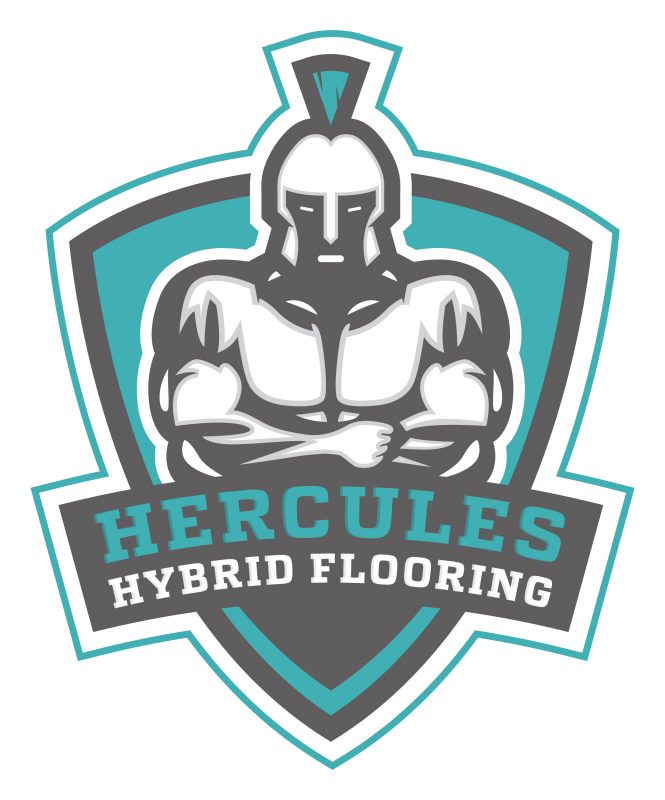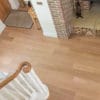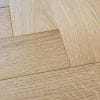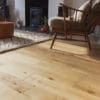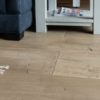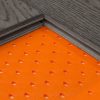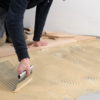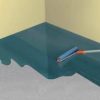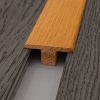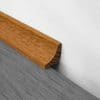Wood flooring can be laid across the room, along the length of it or even at a 45-degree angle. For the most part, the direction you lay your flooring in is entirely down to your personal preference, but there are some conventions and tips that you should bear in mind.
#1 – Towards The Light
The most common practice is to lay wood flooring in the direction of a large window or light source. There are a few reasons for this. Firstly, the light picks up the smaller end joints, rather than the full plank lengths. The smaller joints are less likely to draw your eye, so subconsciously, you take in the natural beauty and character of each plank better as there’s less distraction around it.
#2 – Longest Length of the Room
The exception to this first method would be if laying towards the direction of light means you will be laying across a room, not along the length of it. Laying your wood floor along the length of the room is not only more aesthetically pleasing but can actually make a room appear larger. This effect is especially noticeable in hallways and if you have fixed length flooring.

Sadly, in the real world, it’s often not quite as simple as just laying towards the light or along the length of the room. There are many scenarios and exceptions that can throw a spanner or two in the works.
Secret Nailing
If you are installing using a secret nailing method, your choice of direction is limited as the boards must run perpendicular to the joists/subfloor underneath for maximum strength and stability.
Avoid Switching Direction In Each Room
It’s not unheard of to change the direction of the flooring from room to room to create interest. The problem is, this can actually make the whole home feel disjointed and isn’t a very common choice nowadays because of this. Following this rule, however, does mean you may end up breaking rules one and two.
If you find yourself in this situation, we’d recommend either basing the direction off of the main / biggest room on that floor or the overall longest length of the house i.e. front to back. For example, it’s more important than your large Master Bedroom has the flooring running the right way than your smaller guest bedroom.
Running Throughout Different Rooms Without a Break
You may find you have to break some more of the above rules if you’re planning to run your wood flooring across multiple rooms without breaking it up with door thresholds at each entrance. This may lead you to have to run flooring across a hallway for example rather than along it as you can’t mismatch directions even if you wanted too. Again, in these situations, we’d recommend basing your decision off of the main / biggest room or the overall longest length of the property.








